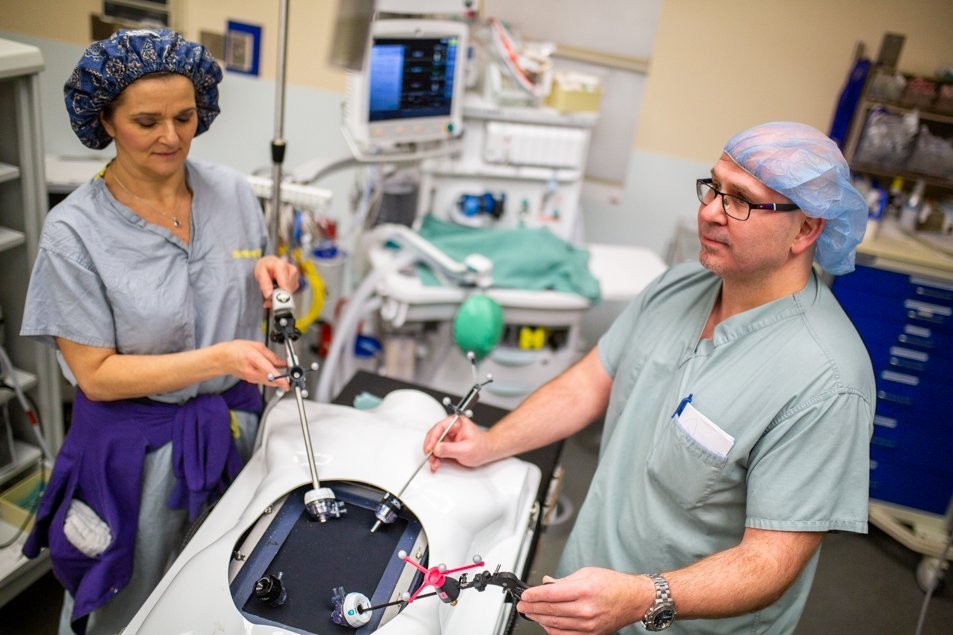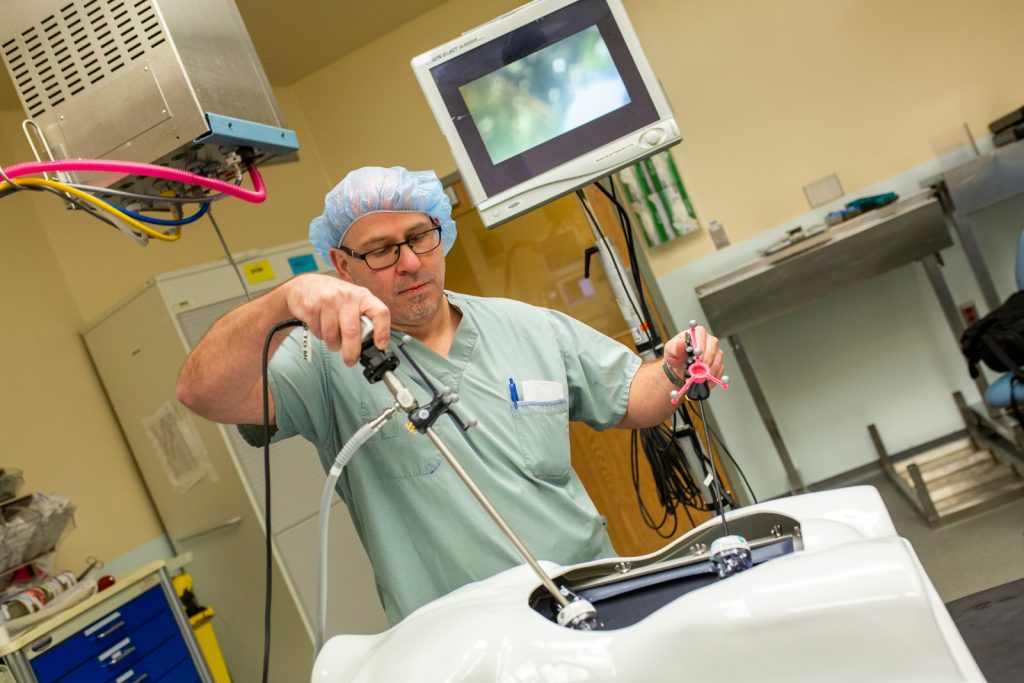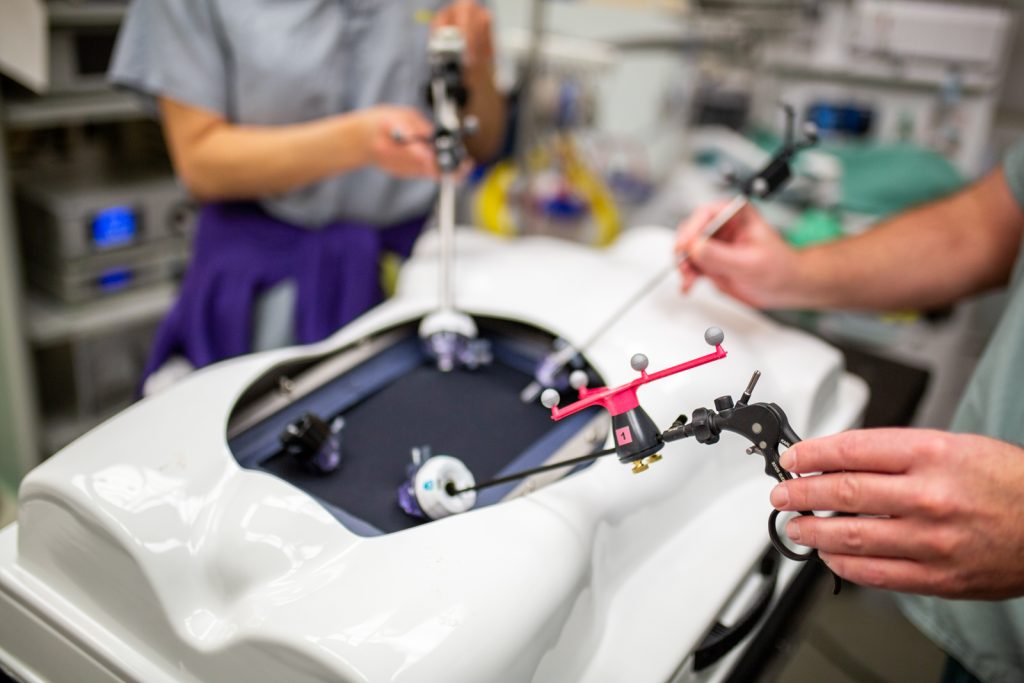
New equipment aims to make surgery safer
Advancements in technology have greatly aided in making many procedures and surgeries safer for patients. This includes laparoscopic surgery, which has become a common approach over the past 40 years for a variety of surgical procedures.
In laparoscopic surgery, a long, slim tool is inserted through small cuts into the abdomen. The tool is equipped with a very small camera and light on the end. Additional instruments are inserted through a similar technique. Images from the camera are fed to a screen, and the surgeon carries out the procedure by watching their movements on the screen. It’s used for many procedures including gall bladder removal, hernia surgery and colon resection.

There’s still room for improvement
As a minimally invasive surgery, the incisions are much smaller. This reduces the patient’s risk of infection and significantly reduces the hospital length of stay, overall leading to a faster recovery.
Despite the benefits laparoscopic surgery offers, there is still room for improvement. Since surgeons are working within a much smaller space, it can sometimes be tricky to keep their multiple tools within a clearly defined safe zone. This can result in unintentional minor injury to surrounding tissues. The injury is often recognized and treated when it occurs, but if it goes unnoticed it can eventually cause complications.
Finding solutions with technology
To tackle this problem a local medical device company, Mariner Endosurgery, has developed a new device called LaparoGuard. It allows surgeons to identify and create a safe zone that the surgeon must stay within during laparoscopic procedures. If the instruments unintentionally move out of the safe zone, Laparoguard sends an audio and visual signal to the operating team.
After rigorous testing and approvals, the equipment is ready to pilot in a research trial at Hamilton Health Sciences (HHS).
LaparoGuard uses innovative image-enhancing technology, similar to what’s used in a fighter jet.
“We’ve come a long way in terms of the safety and precision of minimally-invasive surgery in recent years,” says Dr. Niv Sne, trauma surgeon at HHS and principal investigator for the LaparoGuard trial. “Still, no surgery is without its risks. This trial may present surgical teams with a more advanced option to conduct laparoscopic procedures with even fewer risks to the patient.”
LaparoGuard uses innovative image-enhancing technology, similar to what’s used in a fighter jet. It’s described by the makers as augmented reality without a headset. LaparoGuard is installed in one operating room at Hamilton General Hospital for the pilot, which begins in the next few weeks.

“We’re excited to be working alongside Dr. Sne and the surgical teams at Hamilton Health Sciences,” says Mitch Wilson, president & chief operating officer of Mariner. “Their extensive experience conducting laparoscopic procedures and their interest in exploring new technology to improve patient safety and surgical precision is invaluable.”
A collaborative team
This collaboration between HHS and Mariner Endosurgery is one of the projects funded by Health Ecosphere, an innovation pipeline program that assists in commercializing health solutions. This, along with a grant from Hamilton Health Sciences Foundation, helped make this trial possible.
“Now we’ll use feedback from HHS surgeons to ensure it’s efficient for the team that’s using it.”
The surgeons at HHS’ Hamilton General Hospital are excited to explore the new technology.
“At this point we’re confident LaparoGuard can help make laparoscopic surgery safer for patients. Now we’ll use feedback from HHS surgeons to ensure it’s efficient for the team that’s using it,” says Mitch. “We’re looking forward to the results.”
